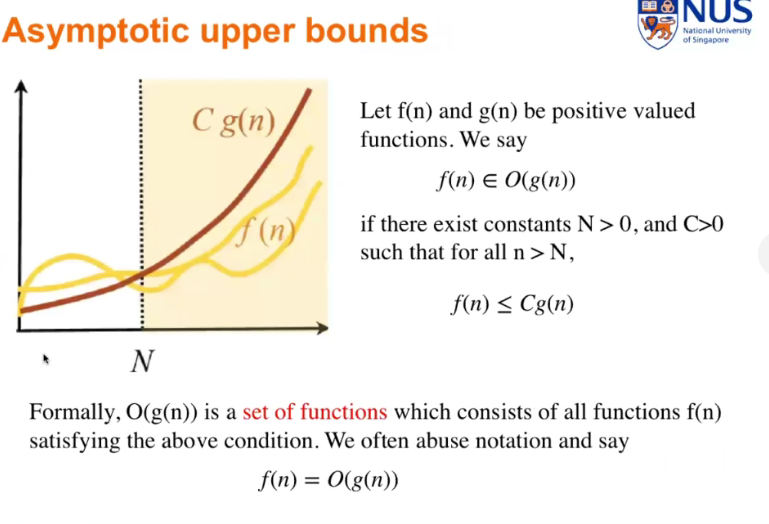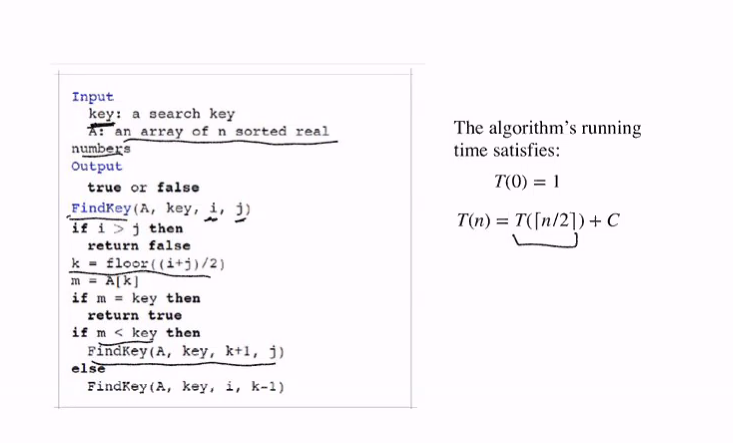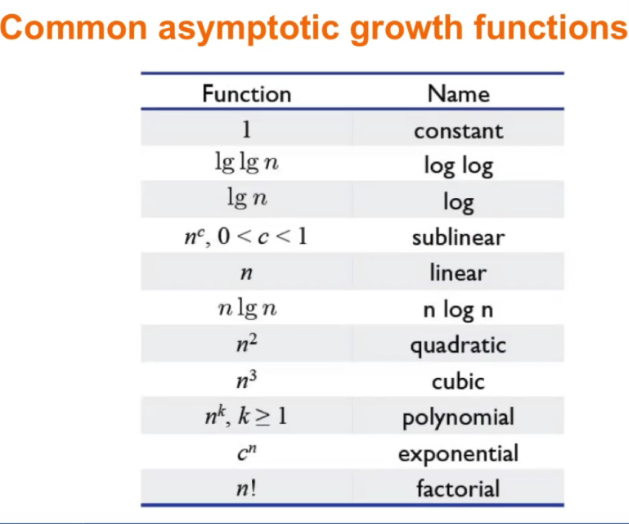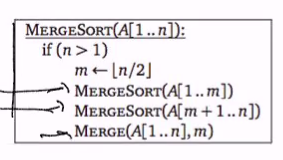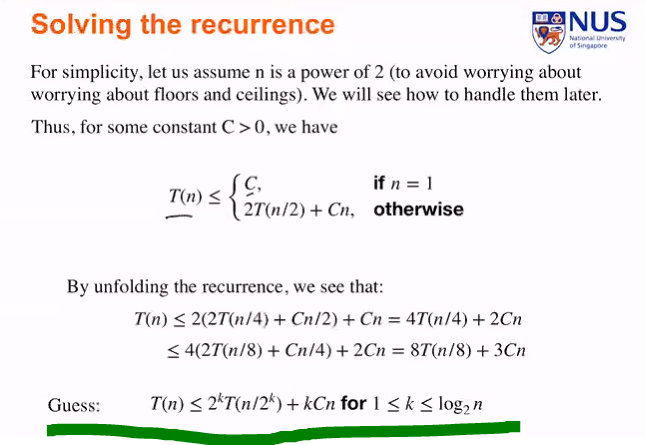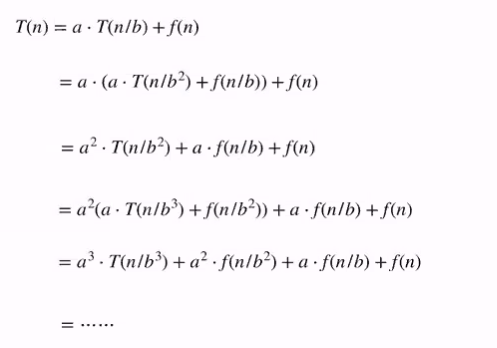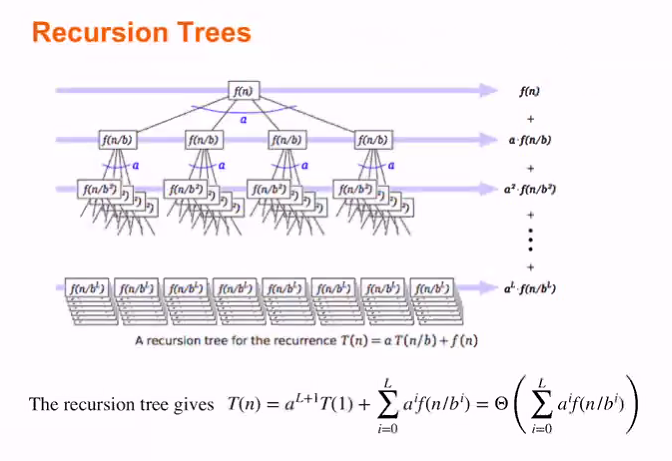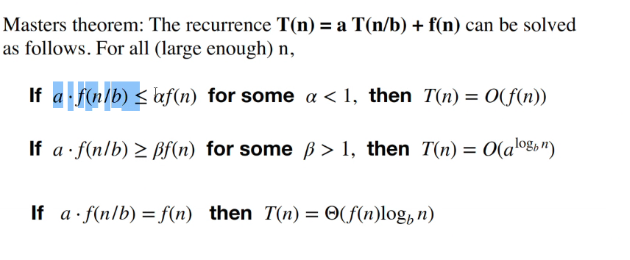Time complexity
- worse case and average:
- Worse: Max time that is required with input size n
- Avg: Assume that input is distributed somewhere randomly
Assume the finite set of inputs, we consider only contains two inputs, A1 and A2. The time needed for solving them is T1 and T2. Avg time is (T1+T2)/2
Asymptotic time complexity
Look at the term that grows the fastest and ignore the constant
e.g f(n) = 39m^2 +16n +5
- We will only look at n^2
Why ignore?
- Growing factors are more significant
- The cosntant is usually small for most algo
Upper and lower bounds
We can say that as n tend to infinite, f(n)/g(n) <= C
Recurrence relation
Analysisng how long the algorithms takes.
Max search example
This is a recursive algo
- Compares the max element with the max of the past largest elements using recursion
Binary search example
Convention
T(n/a) means T(floor(n/a))
Proving asymptotics using limits
- Compute the ratio as n tends to infinite.
Solving recurrence relation
Induction
Try to guess a close form solution
- Compute value of the function at a few points
- Unfold the recurrence a few steps
Try to prove by induction after making a guess.
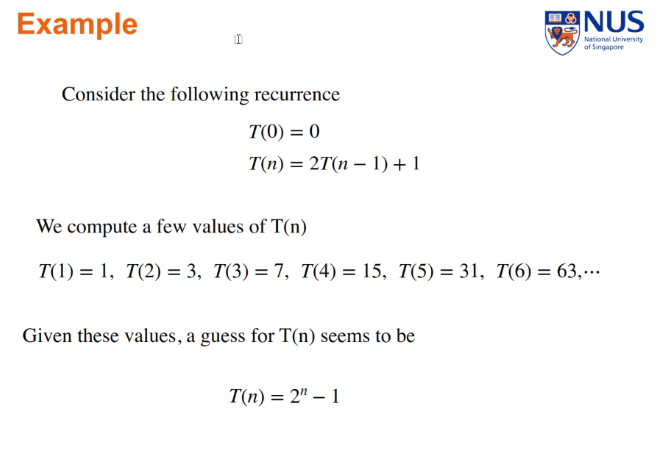
We have to proof k+1, in this example, they use n and n-1
We can open up to find the pattern
Mergesort
- Mergesort recursively left and right
- Merge (linear) current
We open up and make a guess, after that we will use induction to prove it.
- Plug in the bound and we will prove that it is nlogn for big O and omega
Recursion trees (Divide and conquer)
T(n) = aT(n/b) +f(n)
We can open this recursion to get:
We can take note that the number of variables is increasing
F(n) is the additional number of steps needed
Master theorem
Partition into 3 different cases, if one is solve.. can solve the rest with the same way. Try to fit the recurrence into this fomula
Using geometric series of a/1-r where 1-r is constant, we can ignore the 1-r and we will just get a -> O(a)
Transformations
Sometimes we might not be able to apply our methods for solving recurrence relation directly. Thus we transform it such that we can apply our methods
- Domain: S(n) = T(g(n)) for some appropriatey chosen function g
- Range: S(n) = g(T(n)) for some appropriately chosen function g
Example: Unsimplified merge sort
Given a recurrence relation of merge-sort:
We can overestimate to:
Our goal is to get a standard form of: S(n) < = 2S(n/2) + n, so we make the transformation of S(n) = T(n+a)
We get:
Notice we can get the desire form if a=2
Alternative
- Domain substitution is not really necessary
= O(2nlog(2n)) = O(nlgn) since 2^k <= 2n
Example
T(n) = T(n/2) + T(n/4) +1
This reccurence doesnt seem to fit any of our known techniques. Using trial and error suggest that using domain transformation would convert it to look nicer
- Taking
n = 2^k - We will get
t(k) = T(2^k) - Substituting it we will get
t(k) = t(k-1) + t(k-2) + 1 - This is a fib recurrance.
We can get the exact form by making range transformation (k) = t(k) + 1 to get
s(k) = s(k-1) + s(k-2)
We solve s(k) before solving t(k) then solving T(k)
What ever transformation we did, we need to change back
